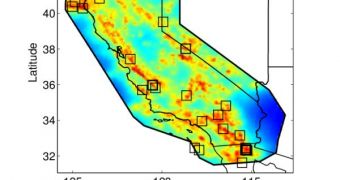Over the past few years, geologists and planetary scientists have been saying that, in the near future, methods of predicting earthquakes more accurately, and further ahead, may become common throughout the world. However, as the years go by, this seems to less and less be the case. The vast majority of earthquake predictions that scientists make is fairly off, and some critics are beginning to say that the trend appears to be stagnating, rather than improving, as advertised.
Additionally, it would appear that even the newest scientific pieces of evidence we find about a certain natural phenomenon seem to point at the fact that random and unpredictable, natural events will remain natural and unpredictable. This is especially true for earthquakes, events that occur unexpectedly, by definition. There are, of course, time periods in which a tremor is more likely to happen. Once every 1,000 or 20,000 years, for example, a certain area gets hit by a massive earthquake, as historical pieces of evidence show. But, if we are in the period of time when one is supposed to strike, there is really not much we can do, detection-wise.
The most accurate earthquake predictions that can be made today are very vague, such as, for instance, “A massive tremor will hit the San Francisco area in less than 50 years.” While this helps put things into perspective, it doesn't do anything to quench the worries of people living in cities such as Tokyo, Los Angeles, and Rome, who want to know what will happen tomorrow. The only possible way of detecting an impending tremor would be to dig to a fault line, and take pressure measurements there. However, this is close to impossible, because drilling there may directly trigger earthquakes, Technology Review reports.
Some research groups rely on using patterns to spot the next big one. Undoubtedly, smaller earthquakes will always happen without us knowing about it, but scientists are keen on knowing when those of an 8, 9, or 10 magnitude on the Richter scale will hit. These massive tremors can bring down skyscrapers, and can kill thousands of people in just a few moments. The Sichuan earthquake that took place last year in China killed nearly 70,000 people in the central parts of the country.

 14 DAY TRIAL //
14 DAY TRIAL //